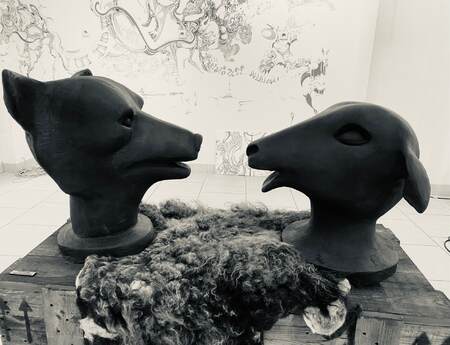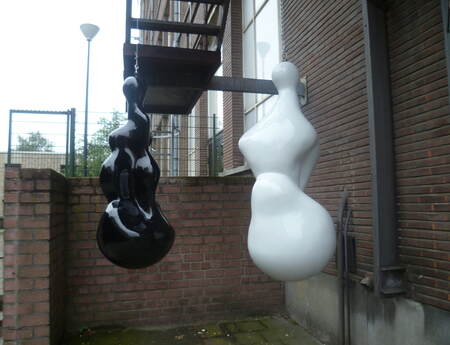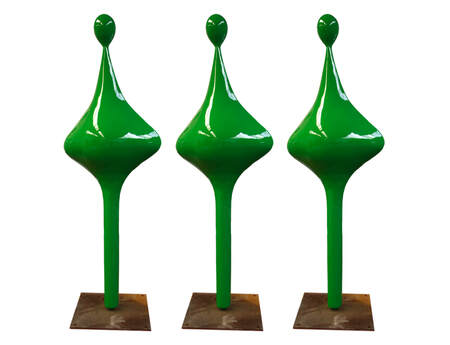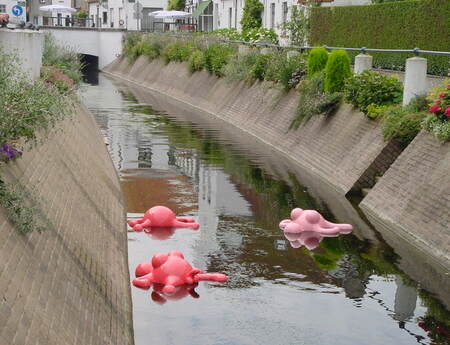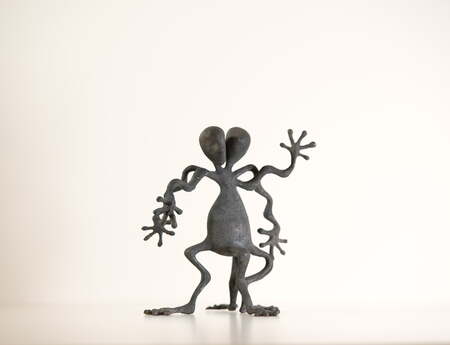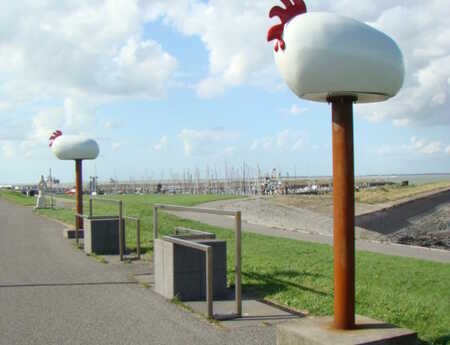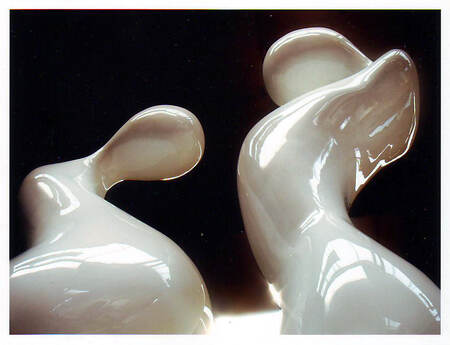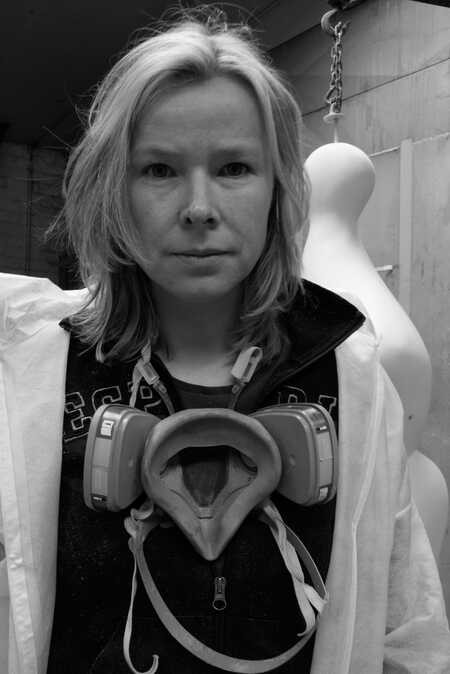
Belgien
Veerle De Smet (°1972)
“A life is not linear. Human growth is organic and unpredictable. Evolution and time make us realize everything is impermanent and that both processes and spaces alike evolve along with it and acquire other meanings. Thus arises a changing relationship between the individual, space, and time. Alienation emerges, and a disruption of man in his relationship to life itself. This interference triggers and forms the foundation for the production of my sculptures. Through my work, I explore the connection between man and his inner nature, and I seek the ways in which to capture such disruption. More as a spectator than as a moralist. My visual work is an experience that, stemming from my own essence, strives for connection with the other”, explains Veerle De Smet.
These ‘snapshots of life’ were first shaped through painting. Later, the more direct medium of photography was put to the task, before she switched to sculpture.
While painting, the artist wanted to sense the energy created by this disruption and thereby intuitively experience the undercurrent and our self-made reality. From this direct expression, Veerle De Smet wished to repair, in colour and in shape, the balance that was disturbed. By making the subconscious conscious and by universalising this form through a primal form, she takes in this energy – her bedrock – and creates a disruption versus balance within the painting. It is reality under the reality translated into a visual. Her paintings, which she used as medium up till now, are always placed in relation to her sculptures.
In order to explore this disruption more thoroughly, she needed stronger and more substantial material. Put literally, energy that would be visualised in matter. Polyester has the ideal property of creating smooth and polished shapes. Someone put it nicely: “Characteristic are its biomorphic figures. Protrusions are suppressed without cutting off its life force. Sometimes it seems to be that its power is made deaf and mute, and the rhythm of its inner forces is confined in a polyester membrane.”
Polyester sculptures thrive in outdoor public spaces and thus bring a temporary change to an environment. That’s exactly how De Smet wants to create alienation in daily life, hereby giving the viewer a different impression of their environment, or in other words, a wholly different point of view of their once-familiar surroundings.
Stability is dependent on proximity and thus is vulnerable. When there is a disturbance, this form shall continue on in another. However, this creates a new disorder to which the environment shall react, and vice versa. De artist leaves the viewer to fill in that experience for themselves.
Take, for example, the polyester sculpture Kan Niet Zwemmen (Can’t Swim). We see an orange fish with a pair of skin-coloured woman’s legs. A disruption of genetic material, or genetic deformation. Every change affects our evolution: whereto are we evolving?
XXY presents a hermaphrodite, a sexless creature, arising from a female figure. These bright pink polyester creatures are sent to float in the water. Water as something organic, disturbed on its turn by environmental pollution.
Example number three is polyester sculpture Kip (Chicken), a symbol for inexhaustible fertility as mass produced product. The chicken in the battery cage, a food producing machine versus a disposable product. The chicken as a reflection of man’s insatiability. Addressing the manipulation of nature for the benefit of man.
In Veerle’s oeuvre, polyester has been given offshoots in installations since a decade or so, with video as extra component. This is how, for instance, Homeless was created as an ode to the homeless who have so-called space thanks to their freedom. A bathtub as addition to the open space.
Concretely, the polyester bath is filled with smoke. We are shown a film of a nude man, projected on the bath in a loop as symbol for daring to take up space. This is also the case for the installation In Between, which consists of an abandoned body projected upon an iron bed frame. The head is omitted, obscuring its identity. The abandoned body reflects abandonment, how people no longer ‘recognise’ each other because of alienation and disruption within themselves. There are no longer any links to oneself or to the other.
The same happens with the installation Select Me/Just Be, that is, a metal utility closet in which labourers hang their clothes during their shift. The closet represents the place of the individual in society, and his desire to belong. Wax and bronze figures hang in the closet, the long silhouettes representing the soul. In an attempt to belong, after all, the individual loses his mobile, supple form and takes on a rigid, ‘rusted’ one. Man is trapped in time and space.
A crushed aluminium flask, called pulle in Dutch, represents enduring your fate. In front of the closet hangs a mangled figure, rope around its neck, balancing on a point, having lost its footing…
Nowadays, artist Veerle De Smet further cultivates her practice through ceramics. Where she first made smooth shapes in polyester to give the essence of energy physical form, now she uses clay as counterbalance. Clay gives her the possibility to represent the bluntness of form, and to emphasise imperfection. De power lies in feeling organically and living through material which intuitively assumes its own form. By transitioning from the smooth, fully rendered forms of polyester to rough clay, with its bruised skin and laceration, she wishes to transform form to its core. To its unadorned, stark state.
Because of the natural materiality of clay and the authenticity of the material, as well as through the return to the core and the new way of form research the unpredictable is challenged once more. The organic forms can seem fallen in or botched. Veerle considers this ‘lived-inness’ thus taking a step closer to man and his inner nature.
A project in progress, INTER-ACT, is depicted through a ceramic sound box from which animals resound. Buzzing bees which stand for connection within a group and elephants rumbling, carrying out a primal cry and sounds of pain, both cut through marrow and bone. A reminder of man, who, centuries ago, could only communicate with crude sounds, and was dependent on his natural environment. The disruptions of climate, consumption, and performance bring about imbalances and miscommunication. The installation Interact represents the relationship between man and nature, but also stands for regaining the balance of man and his own inner nature. In other words: free to be.
Hilde Van Canneyt, spring 16.
